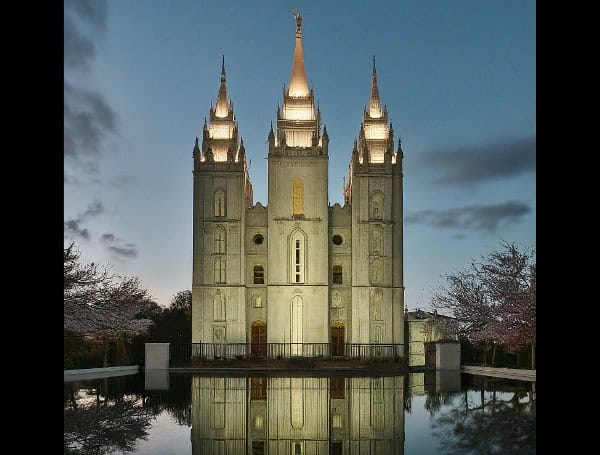Temples are sacred spaces, used by various religions, for various purposes. Temples are often places where the terrestrial and the divine meet. Sometimes embellished with intricate carvings and imbued with spiritual energy, temples hold profound significance for countless believers worldwide. They serve as sanctuaries for worship, contemplation, and communal gatherings, embodying diverse religious and cultural expressions.
From the grandeur of the ancient Egyptian temples dedicated to gods like Ra and Isis to the serene simplicity of Buddhist pagodas dotting the landscapes of Asia, or the personal and significance of Mormon temple edifices and Mormon temple garments, temples reflect the multifaceted tapestry of human spirituality. Each temple is a testament to the beliefs, aspirations, and cultural identities of the communities that built them, offering glimpses into the depths of human imagination and devotion.
Temples in Hinduism and Buddhism
In Hinduism, temples are not merely places of worship but vibrant centers of cultural and social life. They are architectural marvels, adorned with intricate sculptures depicting gods and goddesses, celestial beings, and mythological narratives. The grandest among them, like the Angkor Wat in Cambodia (first built as a Hindu temple and later converted into a Buddhist temple) or the Brihadeeswarar (also spelled Brihadisvara) Temple in India, stand as enduring symbols of the architectural prowess and religious conviction of ages past.
Beyond their aesthetic appeal, Hindu temples are hubs of religious activities, hosting elaborate rituals, festivals, and ceremonies throughout the year. Pilgrims flock to these sacred sites, seeking blessings, redemption, and spiritual solace. Temples also play a crucial role in sustaining local economies, attracting tourists, and fostering trade and commerce in surrounding areas.
Similarly, in Buddhism, temples serve as focal points for spiritual practice and community engagement. From the ancient stupas of Nepal to the towering pagodas of Japan, Buddhist temples embody the principles of harmony, mindfulness, and enlightenment. These serene sanctuaries offer refuge from the cacophony of everyday life, inviting visitors to cultivate inner peace and wisdom through meditation and prayer.
Temples in Judaism
Judaism, too, has its sacred spaces in the form of synagogues and temples. Of course, in centuries past, Jews built temples in Jerusalem–as directed by God. The First Temple, or Solomon’s Temple, was built around 1200 BCE and destroyed when the Babylonians invaded the city in 587-586 BCE. Upon the return of many Jews from exile in Babylon, the Second Temple was built. This is often called Zerubbabel’s temple. The temple was refurbished in the early part of the first century BCE and is often called Herod’s Temple. However, this temple was destroyed in 70 CE by the Romans. The remains of the temple mount are now a place of worship for Jews called the Western Wall.
In modern times, synagogues are often called temples. These places of assembly and prayer serve as focal points for Jewish communities, fostering spiritual growth, learning, and fellowship. Synagogues, adorned with Torah scrolls and menorahs, resonate with the echoes of ancient traditions and modern aspirations, embodying the resilience of the Jewish people throughout history.
Other Edifices as Temples
In Christianity, churches, cathedrals, or basilicas, serve as sacred spaces for worship and sacraments, much as temples do in other faiths. These architectural marvels, adorned with stained glass windows, ornate altars, and towering spires, evoke a sense of awe and reverence. Whether Gothic cathedrals like Notre Dame de Paris or Byzantine marvels like Hagia Sophia, Christian temples stand as enduring symbols of faith, resilience, and artistic ingenuity.
In Islam, mosques stand as beacons of faith and unity, welcoming believers for daily prayers, sermons, and communal gatherings. From the majestic domes of the Blue Mosque in Istanbul to the intricate tilework of the Sheikh Zayed Grand Mosque in Abu Dhabi, Islamic architecture showcases a rich tapestry of cultural influences and artistic expressions. Islam prohibits artwork depicting human visages, so intricate calligraphy and beautiful geometric shapes dominate the architecture. Mosques not only serve as places of worship but also as centers for education, charity, and social outreach, reflecting the inclusive ethos of Islam.
Across continents and civilizations, temples bear witness to the enduring quest for transcendence and connection with the divine. They encapsulate the collective wisdom, faith, and aspirations of humanity, transcending language barriers and cultural divides. Whether nestled in the heart of bustling metropolises or perched atop remote mountain peaks, temples beckon seekers to embark on a journey of self-discovery and spiritual transformation.
Mormon Temples
Mormon temples not only serve as sacred spaces of worship, but they are also considered places of instruction and covenant-making for members of The Church of Jesus Christ of Latter-day Saints (Mormon or LDS Church). These temples stand as symbols of the faith’s commitment to divine teachings and eternal principles, reflecting both spiritual significance and meticulous craftsmanship.
Unlike Mormon meetinghouses, which are open to the public for regular Sunday worship services, LDS temples are reserved for specific sacred ordinances and ceremonies integral to Mormon theology. Inside these temples, Mormons participate in ordinances such as baptism for the dead, endowment ordinances, and eternal marriage (sealing). After participating in the endowment ordinance, Mormons wear underclothing called Mormon garments.
Architecturally, Mormon temples vary widely in design, drawing inspiration from diverse cultural influences while adhering to certain core principles of LDS temple architecture. Characterized by their white exteriors, spires, and meticulous attention to detail, Mormon temples often blend classical elements with modern sensibilities, creating serene and dignified spaces conducive to worship and reflection.
Beyond their architectural significance, Mormon temples hold deep spiritual meaning for believers. For Mormons, entering the temple is a sacred privilege and a deeply personal experience, marking significant milestones in their spiritual journey. They also provide opportunities for service and volunteerism, as members participate in various temple-related activities, including genealogical research and temple ordinance work on behalf of deceased ancestors.
Mormon temples exist around the world. There are currently 350 temples around the world that have been announced, are under construction, or are finished and functioning. As of 2024 in Florida, there are two functioning temples, one under construction, and two announced. Tampa is the location for one of the announced temples. In the coming months and years, the Tampa temple will be constructed. After it is completed, there will be a short open house where anyone from the public can make an appointment and tour the temple. After the temple is dedicated, only baptized members of the Mormon Church who adhere to certain standards are allowed to enter the temple. Websites like Mormonism Explained can help people educate themselves on the beliefs and history of Mormonism.
Conclusion
Temples embody the spiritual aspirations, cultural identities, and artistic achievements of humanity across epochs and civilizations. These sacred spaces serve as bridges between the earthly and the divine, inviting believers to embark on a journey of self-discovery, contemplation, and communion with the divine. As custodians of our cultural heritage, temples serve as reminders of the enduring power of faith, creativity, and collective endeavor in shaping the destiny of civilizations past, present, and future.
Help support the Tampa Free Press by making any small donation by clicking here.
Android Users, Click To Download The Tampa Free Press App And Never Miss A Story. Follow Us On Facebook and Twitter. Sign up for our free newsletter.


